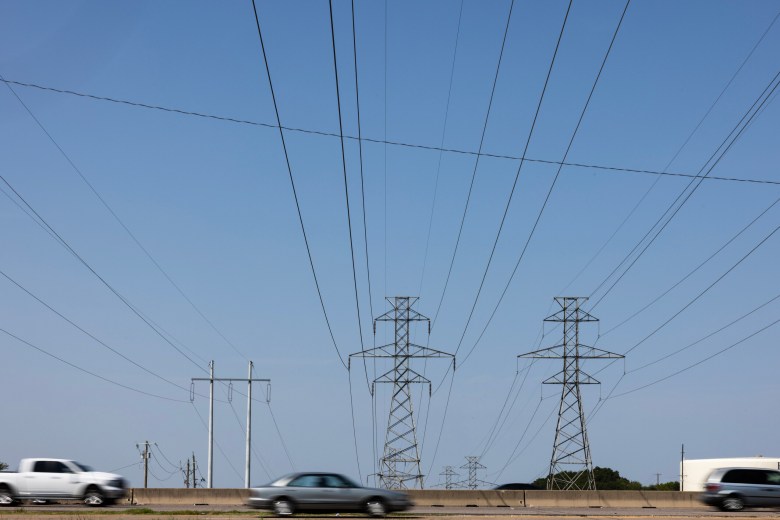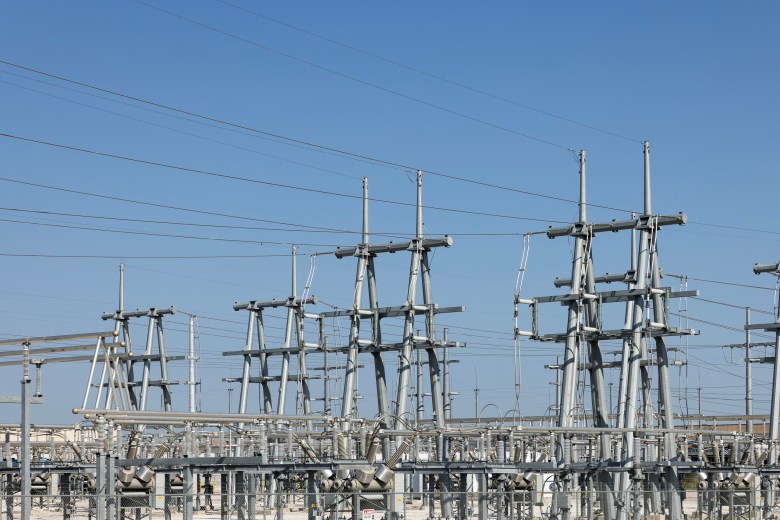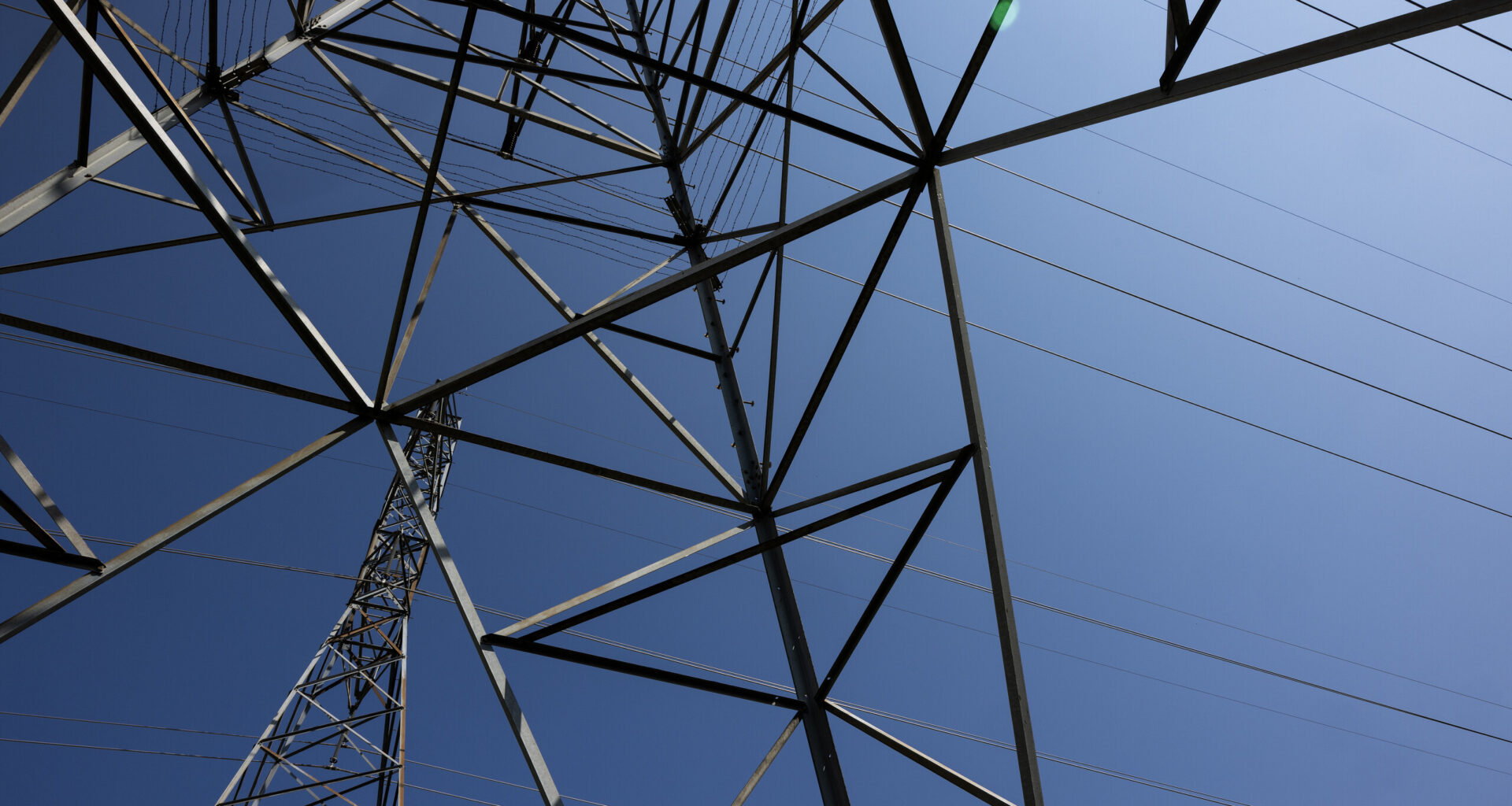During a recent legislative hearing, state Sen. Phil King sought to illustrate Texas’ demand for electricity in recent years with a slight upward tilt of his right hand.
Then as the Weatherford Republican forecasted what’s in store for the remainder of the decade — and beyond — his hand shot nearly straight up.
Throughout the state, and particularly in the Dallas-Fort Worth area, current and future electricity demand is toppling all previous predictions.
“North Texas is probably the fastest growing area of the United States,” King said in a recent interview. “If it’s not, it’s close to it. And, obviously, that leads to more power demands.”

This is part of the Report’s special 1 Million & Counting growth series, which will be published on Mondays into October. The reporting will lead to a growth summit Oct. 23 at the downtown Tarrant County College Trinity River Campus.
Fort Worth recently surpassed 1 million residents with projections showing the city could add another 400,000 over the next 25 years. Meanwhile, across the state, estimates show electricity demand is on track to nearly double from 87 gigawatts this year to 138 gigawatts by 2030. A gigawatt is a measure of electricity generally considered strong enough to power a medium-sized city.
A variety of factors contribute to North Texas’ soaring energy demand, including the economic and population growth that’s boosted Fort Worth to be the nation’s 11th largest city. However, one in particular complicates keeping up with energy demand: data centers.
Texas is a national leader in the surging worldwide development of big data centers that can often gobble up more electricity than some cities. These centers — often made up of a massive or multiple buildings — house large-scale servers, computers and equipment that power AI and other technology.
“The demand for digital services continues to increase and continues to be necessary to build out our capabilities for the 21st century economy,” Dan Diorio, senior director of state policy at the Data Center Coalition, an industry trade group, told The Texas Tribune earlier this year. “Texas is uniquely poised to benefit from that.”
 As more people move to North Texas, state officials are focused on meeting growing power needs.
As more people move to North Texas, state officials are focused on meeting growing power needs.
The state had nearly 300 centers a year ago, according to the Texas comptroller’s office, with 141 in the Dallas-Fort Worth area. Fort Worth’s AllianceTexas, for example, is home to several Fortune 500 data centers — including Meta’s $1 billion hyperscale data center campus that draws on wind energy.
Leaders across the state welcome the centers as a major economic boost while consumer groups warn they risk encroaching on the electricity needs of residential Texans and putting added pressure on the state’s electric grid.
“Because the data centers use so much energy, it’s like a new neighborhood or even a small city,” said Sandra Haverlah, president of the Texas Consumer Association. “You’re putting in a facility that sometimes uses the same energy as thousands of homes.”
This year, Texas lawmakers put up guardrails by imposing operating standards on data centers and other “large-load” electricity users to help ensure stability of the state’s energy grid.
“We want these data centers here,” said King, who authored the legislation. “We just want to make sure that our grid stays reliable and our prices stay low.”
Putting up guardrails
The story is similar across Texas, helping to spur growth in big cities and small towns.
In nearby Red Oak, for example, community leaders have initiated three data center campuses that will include 20 buildings and encompass 5 million square feet. The town of just over 20,000 is about 30 minutes southeast of Fort Worth in Ellis County.
The job-creating projects constitute at least $11 billion in investments, officials have said. John Knight, Red Oak’s assistant director of economic development, notes the centers will drive up tax revenue from businesses, reducing the burden on residents.
 An Oncor substation sits between the Google Data Center and a Compass Datacenter in Red Oak. Texas has a new law aimed keeping the state’s power grid stable as more data centers are built. (Maria Crane | Fort Worth Report/CatchLight Local/Report for America)
An Oncor substation sits between the Google Data Center and a Compass Datacenter in Red Oak. Texas has a new law aimed keeping the state’s power grid stable as more data centers are built. (Maria Crane | Fort Worth Report/CatchLight Local/Report for America)
Red Oak civic leaders sought data center campuses as part of a goal to expand beyond a bedroom community to Dallas and Fort Worth.
“These conversations go back six to seven years ago,” Knight said. “What’ll it do for the community is that they’re big taxpayers. The jobs they provide are high-wage jobs, and they use a small amount of city services.”
The state ranked second to Virginia among the 15 states that accounted for 80% of data center load in 2023, according to the nonprofit Electric Power Research Institute.
Not everyone wants the mega data center campuses that require enormous amounts of electricity and water to maintain.
A year ago, some neighbors from the Panther Heights community in southwest Fort Worth fought efforts to build a data center campus that will include five buildings, saying they worried about traffic, energy consumption, water use and noise as issues.
Ultimately, the City Council approved a zoning change for the site after developers met with residents to address issues. For example, developers added to plans an open space featuring parklike amenities to provide a buffer between the center and homes.
More centers are on the way across the region.
A report by CBRE found that last year’s under-construction activity for data centers in the Dallas-Fort Worth area totaled 472.1 megawatts, a nearly 73% increase year over year. That means intentional planning, officials said.
Companies are expected to invest $7 trillion in capital expenditures on data center infrastructure globally, according to a study by McKinsey & Company. Another study projected that as much as 10% of Texas electric consumption in 2030 could be in data centers.
King, who represents parts of Tarrant County, said data centers and related facilities, such as artificial intelligence manufacturing, “consume unparalleled tremendous amounts of power,” often using more electricity in a single building than in an entire municipality.
“These large-load customers’ demand for electricity is requiring ERCOT to plan for load growth at dramatically higher levels than ever experienced in the history of Texas,” he said of the Electric Reliability Council of Texas that manages the flow of energy to customers.
One key provision in King’s legislation requires large-load users to curtail power from the grid or transfer to a back-up generator during periods of emergency demand on the grid. Additionally, they must pay a $100,000 fee for a large-load screening study before building the facility.
Lawmakers have focused on electric grid reliability since 2021’s devastating snow and ice storm that claimed more than 200 lives and led to a series of upgrades to the grid.
“For any of us who lived through Winter Storm Uri, I think we’re always going to be concerned about another calamity like that,” Rep. Chris Turner, D-Grand Prairie, said. “It’s fair to say that the grid is in much stronger shape than it was in 2021, but it’s also fair to say that we haven’t done everything we should do to absolutely ensure that another Winter Storm Yuri event” doesn’t occur.
Turner pointed to other steps taken since 2021, such as growing renewable energy, increasing battery technology for back-up energy and improving weatherization to prevent power generators from freezing up.
 Red Oak has plans for three data center campuses, including this Google Data Center. (Maria Crane | Fort Worth Report/CatchLight Local/Report for America)
Red Oak has plans for three data center campuses, including this Google Data Center. (Maria Crane | Fort Worth Report/CatchLight Local/Report for America)
Walt Baum, CEO of Powering Texans, an energy trade association made up the state’s four largest electric power generators, called the recent law a “positive product” that enables data centers to integrate in the Texas market.
“The Legislature did a good job of saying that Texas is open for business, but at the same time making sure that adding these data centers aren’t going to affect the reliability of the grid,” said Baum, whose member organizations encompass Calpine, Constellation Energy, NRG Energy and Vistra.
Still, the region’s “sudden jump” in population and electric demand caused by the growth of data centers raises concerns about who will wind up bearing the costs, said Chris Boyer, an associate professor of engineering at the University of Texas at Arlington.
Moreover, he said, grid operators may not be “set up for such rapid growth.”
During the debate on King’s Senate Bill 6, consumer advocates called for putting a bigger burden on data centers to share in the heightened costs resulting from adding transmission infrastructure to accommodate the new facilities.
Haverlah, of the Austin-based consumer group, said, “The build-out for that is expensive. … Are we going to have these guys come to Texas and make us build an infrastructure to handle their needs?”
Diorio, of the Data Center Coalition, told lawmakers in February that industry leaders share the Legislature’s commitment to ensure a reliable and affordable grid “that prioritizes the welfare of all Texans while supporting a strong economy that fosters innovation.”
Dave Montgomery is an Austin-based freelance reporter for the Fort Worth Report.
The Fort Worth Report’s Texas legislative coverage is supported by Kelly Hart.
At the Fort Worth Report, news decisions are made independently of our board members and financial supporters. Read more about our editorial independence policy here.
Related
Fort Worth Report is certified by the Journalism Trust Initiative for adhering to standards for ethical journalism.
Republish This Story
Republishing is free for noncommercial entities. Commercial entities are prohibited without a licensing agreement. Contact us for details.
